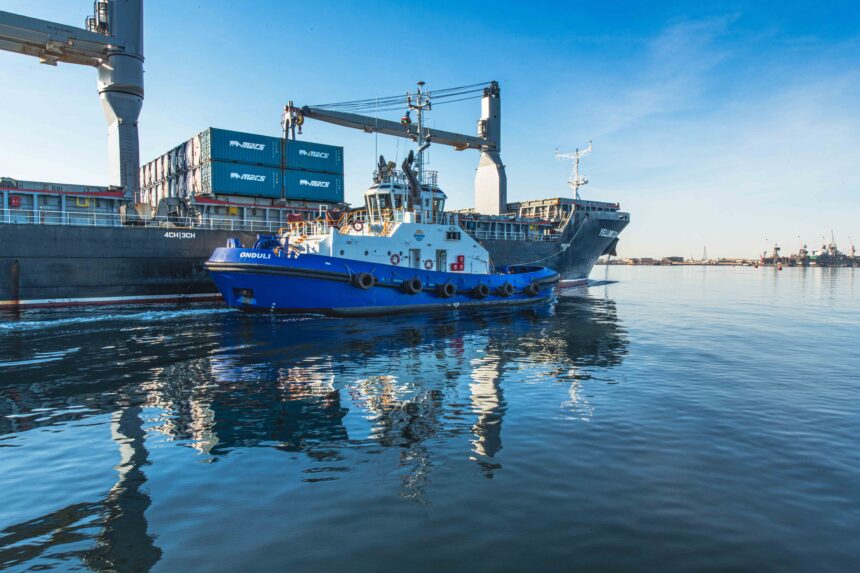The Port of Walvis Bay rubber-stamped its authority as the country’s largest commercial anchorage when it performed beyond expectation by handling export cargo worth over N$4.7 billion in January 2025 alone. This is according to the latest Namibia Statistics Agency (NSA)’s Merchandise Trade Bulletin.
The port is strategically located halfway down Namibia’s coast, and provides an easy and fast shipping route between Southern Africa, Europe, the Far East and the Americas.
It remains the country’s largest commercial port, receiving close to 1 000 vessels and handling about eight million tonnes of cargo per annum.
The port handles container imports, exports and transhipments, and bulk and break-bulk volumes of various commodities, and can handle ten million tonnes of liquid bulk cargo per annum as well as 10 million tons of dry and break-bulk cargo per annum.
The NSA trade bulletin said the export value represents 46.5% of total exports that left the country during the month of January via sea and most of those exports comprise mainly of uranium and fish.
During the month under review, 203 729 tonnes of goods were recorded as exported through the sea, representing a decrease of 2.8% on a month-on-month basis, and an increase of 24.4% on a year-on-year basis.
Looking at export figures of commodities that left the country at other sea and land border posts of the country, the NSA reported that the Port of Walvis Bay was followed by Eros Airport and Katima Mulilo border post, both performed satisfactorily by handling export cargo of N$2.5 billion and N$1.5 billion, respectively.
Meanwhile, the Ariamsvlei and Trans Kalahari border posts each handled exports of N$2.3 billion and N$1.5 billion during the reported month of January 2025.
Global standards
The port of Walvis Bay is ideally situated to serve Southern Africa’s landlocked countries with links to Namibia’s air, rail and road networks, with the port’s main transport arteries being the Trans-Kalahari, Trans-Cunene and the Walvis Bay-Ndola-Lubumbashi trade corridors.
With mild weather conditions, delays are rare and turnaround times are highly competitive, with handling times for container vessels being around 24 to 48 hours, depending on volumes per call.
For bulk vessels, the average handling time is between 72 to 120 hours, depending on tonnage and shipment, while for break-bulk vessels, this averages between 35 to 48 hours.
The port is a deep-water harbour comprising three sections, the South Port, the Fishing Harbour and the North Port . It comprises 13 commercial berths, including a tanker jetty and a dedicated passenger berth for accommodating cruise and passenger vessels.
The port’s new container terminal, established in 2019, has an additional 600-metre-long quay wall with a maximum water depth of 16 metres.
Two new liquid bulk jetties, each of maximum capacity of 90,000 deadweight tonnage are located at the North Port with more than 1,300 hectares of backup land for tank storage of liquids and gasses and associated industries.
The port’s demand is further bolstered by its ship repair facilities, including the Syncrolift, with a lifting capacity of up to 2,000 tonnes and three floating docks. The Syncrolift is operated by Namport’s subsidiary, Namibia Drydock and Ship Repair (Namdock), with a maximum lifting capacity of 15,000 tonnes. -ohembapu@nepc.com.na


